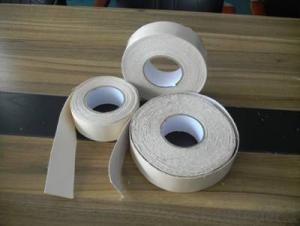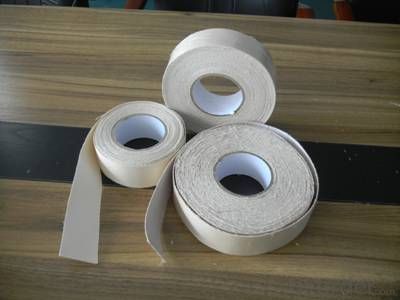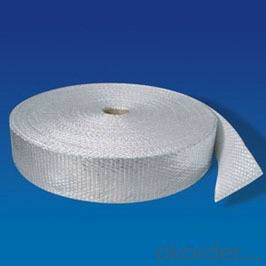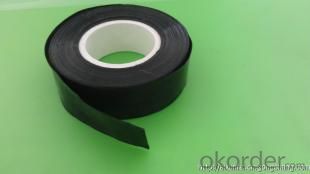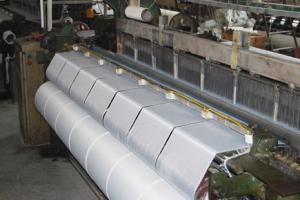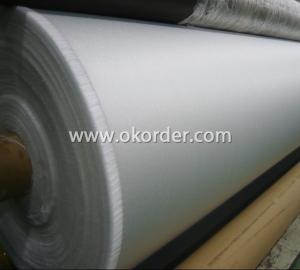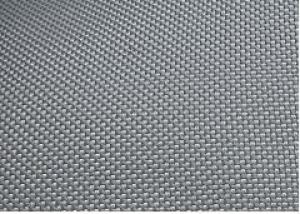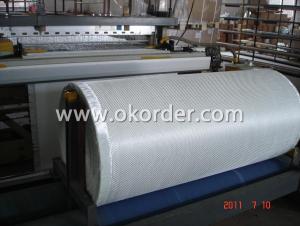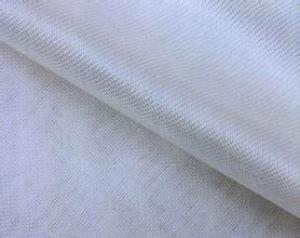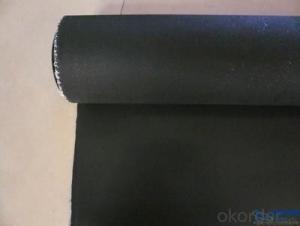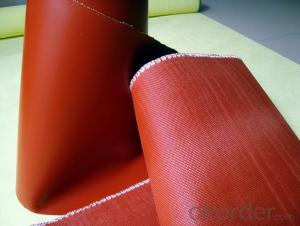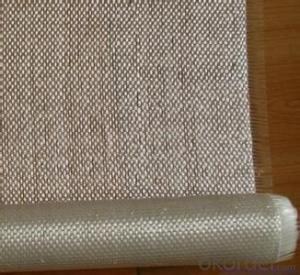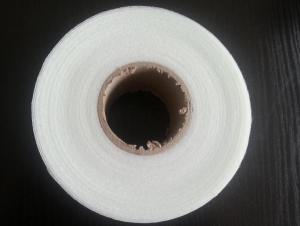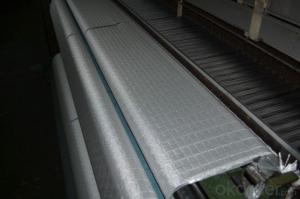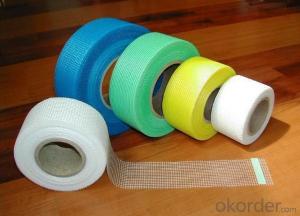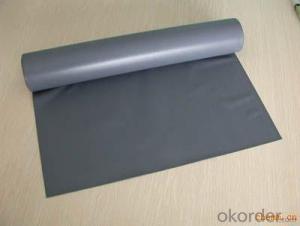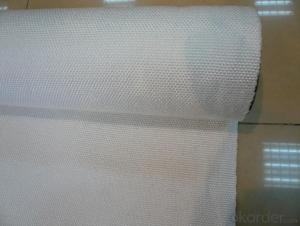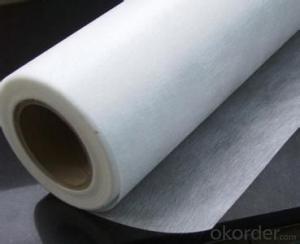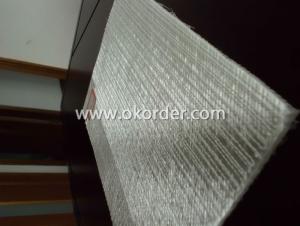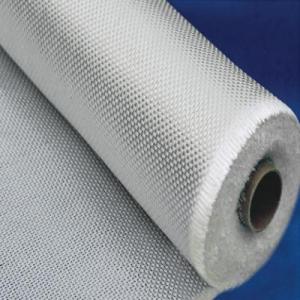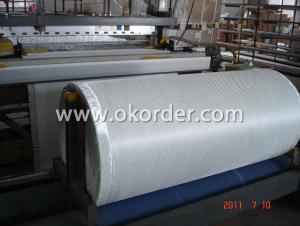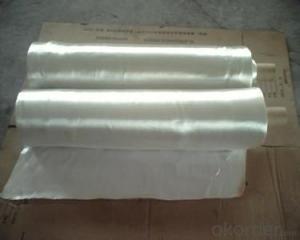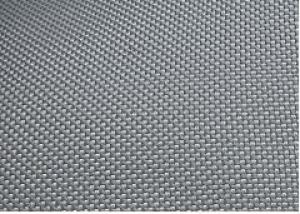High Silicone Fiberglass Fabrics Tape in Good Quality
- Loading Port:
- China Main Port
- Payment Terms:
- TT or LC
- Min Order Qty:
- 2000kg kg
- Supply Capability:
- -
OKorder Service Pledge
OKorder Financial Service
You Might Also Like
1Description :
.High silica tapes are made by slitting the high silica fabrics.They can be used at the temperature of 1000℃ without changing its properties。
This kind of tape can be wrapped up to special pipe and equipment much easier.
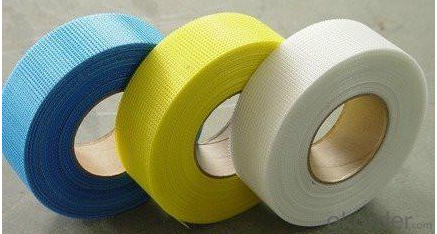
2.Specification:
Product name | Base Fabric | Sio2% | Working Temperature ℃ |
High Silica | HS-600 | ≥96% | 1000 |
Adhesive-slit | HS-100 | ≥96% | 1000 |
3Application:
Insulattion wrap for pipes,hoses and electrical cables heat gasket or seal.
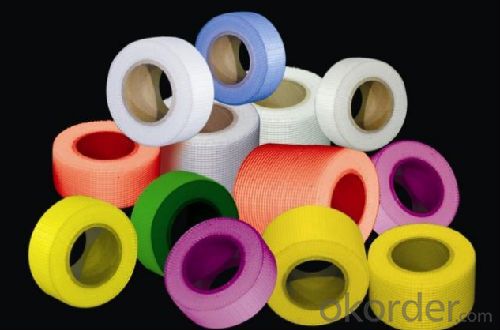
4.Package
Packed with cartons and pallets
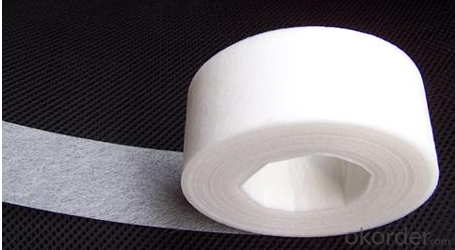
5.FAQ
1.What is the delivery time ?
15days after receiving the deposit
2.Are you a trading company or factory.
We are factory,and we have more than 10 years of experience.
- Q: Can fiberglass fabrics be used for reinforcement in furniture or fixtures?
- Yes, fiberglass fabrics can be used for reinforcement in furniture or fixtures. Fiberglass fabrics are known for their strength, durability, and flexibility, making them ideal for reinforcing various types of furniture and fixtures. They can be used to reinforce the frames of chairs, sofas, and other seating furniture to provide additional support and stability. Fiberglass fabrics can also be used to reinforce the surfaces of tables, countertops, and shelves, enhancing their ability to withstand heavy loads and resist cracking or warping. Furthermore, fiberglass fabrics can be molded into different shapes and sizes, allowing them to be used for reinforcing various types of furniture or fixtures.
- Q: What's the function of fiberglass cloth? Where can I use it?
- Glass fiber cloth weight is relatively light, used in the new type of glass fiber insulation composite wind pipe, can be very good to reduce the color steel, glass fiber, air duct weight, conducive to workers to manufacture and install
- Q: Can fiberglass fabric be used for filtration applications?
- Yes, fiberglass fabric can be used for filtration applications. It is commonly used in industries such as chemical processing, gas and air filtration, water treatment, and automotive manufacturing. The material's high strength, durability, and resistance to chemicals make it an effective choice for filtering out contaminants in various applications.
- Q: Can fiberglass fabric be used for conveyor belts?
- Yes, fiberglass fabric can be used for conveyor belts. Fiberglass fabric is known for its high strength and resistance to heat, chemicals, and abrasion. These properties make it suitable for various industrial applications, including conveyor belts. Fiberglass fabric can withstand high temperatures and provide excellent dimensional stability, which is crucial in conveyor belt systems that involve continuous movement and heavy loads. Additionally, its low coefficient of friction allows for smooth and efficient material handling. Overall, fiberglass fabric is a reliable and durable choice for conveyor belts in industries such as manufacturing, mining, and food processing.
- Q: Is fiberglass fabric resistant to birds?
- Fiberglass fabric does not possess natural resistance to birds. Despite being a robust and enduring substance, birds can still inflict harm upon it. They have the tendency to peck at or scratch its surface, leading to slight to moderate impairment. Furthermore, if fiberglass fabric meets their requirements, birds might employ it as a construction material for their nests. Nevertheless, fiberglass fabric is not the preferred choice for birds due to its lack of suppleness and flexibility, qualities typically sought after for nesting. Consequently, while it may not be entirely impervious to birds, fiberglass fabric is less likely to be heavily targeted or extensively damaged by them in comparison to other materials.
- Q: Can fiberglass fabric be used for insulation in transportation vehicles?
- Yes, fiberglass fabric can be used for insulation in transportation vehicles. Fiberglass fabric is a popular choice for insulation in various industries, including automotive and aerospace. It offers excellent thermal insulation properties, which is crucial for maintaining a comfortable and controlled environment within transportation vehicles. Additionally, fiberglass fabric is lightweight, flexible, and easy to install, making it suitable for use in different parts of transportation vehicles, such as walls, floors, and ceilings. It can help reduce heat transfer, minimize noise transmission, and enhance energy efficiency. Moreover, fiberglass fabric is fire-resistant and has a high melting point, making it a safe and reliable insulation material for transportation vehicles.
- Q: What are the different dyeing options available for fiberglass fabric?
- Some of the different dyeing options available for fiberglass fabric include direct dyeing, acid dyeing, and disperse dyeing. Direct dyeing involves applying dye directly to the fabric, typically through a dye bath or by using a spray or brush. Acid dyeing involves using acid dyes that are specifically formulated for synthetic fibers like fiberglass. Disperse dyeing is another option, where disperse dyes are used to color the fabric through a process called heat transfer dyeing. These different dyeing options offer various methods to achieve desired colors and effects on fiberglass fabric.
- Q: What color steel plate is good for dust-free workshop?
- Polyurethane sandwich panel consists of upper and lower intermediate color steel polyurethane foam composition, is one of the widely used building materials in the construction industry, has good thermal insulation, sound insulation, fire prevention materials added non combustion polyurethane. The polyurethane sandwich board has the advantages of non burning, moisture resistance, moth resistance, sound insulation, light weight, dry and wet, no deformation and heat preservation effect, and can be nailed, sawed and constructed, which is simple and convenient, and can be used repeatedly.
- Q: How does fiberglass fabric perform in terms of flexibility?
- Fiberglass fabric is known for its exceptional flexibility. Due to its composition of fine glass fibers, it can be easily molded and bent into various shapes and contours without losing its structural integrity. This flexibility makes fiberglass fabric highly versatile and suitable for a wide range of applications. It can be used in industries such as automotive, aerospace, construction, and even fashion, where flexibility and adaptability are crucial. Additionally, fiberglass fabric can withstand repeated bending and stretching without experiencing significant wear or tear, making it a durable choice for projects that require long-term flexibility. Overall, fiberglass fabric performs exceptionally well in terms of flexibility, offering designers and manufacturers the freedom to create innovative and dynamic products.
- Q: Can fiberglass fabric be used for insulation in tanks and vessels?
- Yes, fiberglass fabric can be used for insulation in tanks and vessels.
Send your message to us
High Silicone Fiberglass Fabrics Tape in Good Quality
- Loading Port:
- China Main Port
- Payment Terms:
- TT or LC
- Min Order Qty:
- 2000kg kg
- Supply Capability:
- -
OKorder Service Pledge
OKorder Financial Service
Similar products
Hot products
Hot Searches
Related keywords
